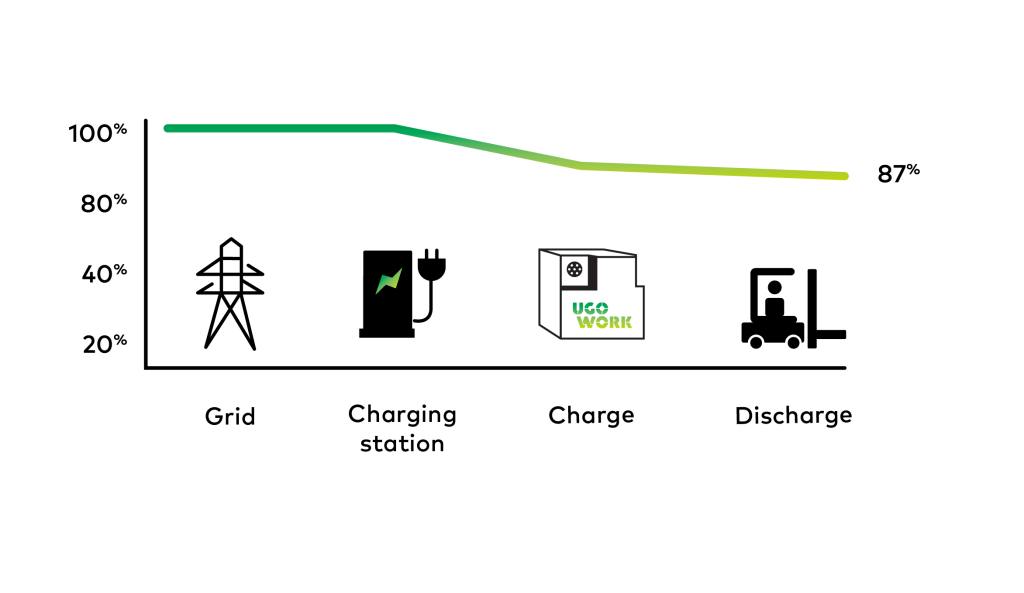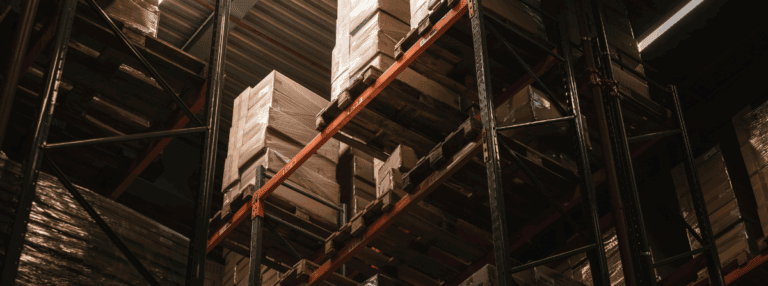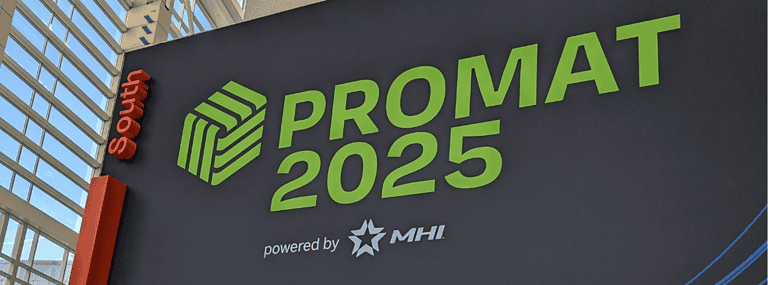Lithium Batteries Are Key to Forklift Fleet Sustainability
With COP 26 all over the news, and after reading recently released research by HSBC and Boston Consulting Group (BCG) about how supply chains account for 80% of the world’s total carbon emission[1], it’s the perfect time to talk about how your next forklift battery choice can help you achieve your sustainability goals.
For years the sustainable material handling concept was somehow framed as outside the C-suite’s purview, but is now a top priority. Consumer demand, regulatory directives, investor pressure and workforce attitudes about sustainable products and practices are among the driving forces in this seismic shift. How is using lithium batteries going to help me reach my sustainability goals?
Lithium’s Energy Efficiency
Transition from lead acid to a lithium solution is expected to reduce electricity consumption by 35-50%. These savings are generated from more efficient chargers, low energy density loss over time, slow discharging, data analytics capacity and advanced materials.Efficiency as Per Energy Systems (off-the-shelf spec.)
| Efficiency as Per Energy Systems (off-the-shelf spec.) | ||
| Component Efficiency | Lead-acid | Lithium |
| Charger | 80% | 91% |
| Battery | when charging | 80.5% | 98% |
| Battery | when discharging (forklift operation) | 80.5% | 98% |
| Total “roundtrip” | 52% | 87% |

Compared to the use of propane, the sustainability benefits are even higher. Propane is a by-product of natural gas and petrol, and therefore the most pollutant of forklift energy source. We need to think even further and consider the procurement chain of natural gas: gas tanks, transportation, etc. The propane supply chain is something that is overlooked and that further increases your carbon footprint.
Emission & Carbon Tax
According to a 2020 UN report and a report from University of Tennessee, end-to-end supply chains’ impact on emissions is more than five times that of companies’ direct operations.[2] By switching from lead-acid to lithium, companies can save over three tons of GHG per truck per year, which is the equivalent of one car off the street or planting 50 trees.
Several U.S. states, including California, Rhode Island, Maine, Vermont and other North Eastern states, and Canadian provinces, including Quebec and British Columbia, maintain a carbon tax. Even cities like the City of Vancouver implemented a $150/metric ton for emissions. Looking at Europe’s carbon tax evolution, North America can expect this tax to increase as acceptance of climate change and its impacts on the global environment become more prevalent both among the population and politicians.
Private sector companies are also reading the signs and creating self-imposed, internal carbon tax schemes. According to a recent carbon pricing survey of 6,000 companies, more than 2,000 – representing over USD $27 trillion in market capitalization – said they currently have an internal carbon price or plan that will be fully implemented in the next two years. [3] Microsoft’s leadership in this area is notable. The company maintains an air carbon fee of USD $15/metric ton for all emissions created. Unlike some other companies, their internal carbon tax isn’t a “shadow fee” that is calculated, but results in no tangible change. Each division must pay the carbon-based emissions fee, which in turn is used to pay for sustainability improvements within the company. Danone, another leader in sustainability set an internal carbon tax to $40 per ton, a price that is industry average.[4]
Circular Economy
The most sustainable product is the one you do not produce. Imagine being able to use one lithium battery over a period of 10 years vs up to nine lead-acid batteries! Lithium batteries’ increased durability and energy density makes this possible – which results in a 900% reduction in a company’s carbon footprint.
Battery design technology, like that produced by UgoWork, optimizes the lifetime of each battery component by only replacing specific parts of the battery – such as the lithium cells. It also increases the sustainability of the product, and its impact on the environment, by making the casing 100% recyclable, and the lithium packs 95% recyclable through established recycling and repurposing partnerships. By thinking “green” and using highly-recyclable batteries, companies can even reduce the total cost of ownership by recycling lithium batteries through dedicated organizations and even recover a part of their cost. (or, at least, not having to pay an extra disposal fee).
The modular counterweight system used by most sustainable battery companies allows them to shift their batteries between forklifts and maximize the battery’s lifetime. For example, using a battery in a high usage forklift in the first years of the battery’s life, and in a low usage forklift in later years, extends the life of the battery and results in a more sustainable product for the environment and the company’s bottom line.
Even with the leading lead acid batteries (TPPL), clients have periods where a full charge is required. This inefficiency requires clients to own more than one battery per forklift – or even worse, more forklifts. With lithium, the battery can be charged 0–85% in one hour and every forklift can run 24/7. A recent case study with a leading 3PL found that by combining the lithium technology with data analytics, a company can eliminate one full forklift for every six forklifts.
LEED Certification
Striving to become LEED certified is now the norm for many distribution centers and manufacturing plants. With an average of 41% reduction in forklift electricity consumption, electrification of forklift fleets (propane conversion), 97% recyclability, and a reduction in the number of batteries going to landfills, lithium batteries will help clients achieve LEED certification in Energy & Atmosphere and Indoor Environmental Quality. UgoWork’s forklift energy optimization through cloud computing also supports Innovation in Operation.[5]
The number of credits a company receives is dependent on the LEED project manager’s analysis and is subject to the overall building’s status.
Overall
The need for sustainable supply chains is no longer in question, but when a company should take on the needed changes can vary. The first step is to start with the ‘easy wins’ now – where sustainability and ROI meet. Converting to lithium battery is one such easy win!
Contact our Energy Experts to discuss the opportunities of Lithium in cold storage applications.
About the author
Charles Girard is a highly motivated project director with over 15 years of experience supporting businesses. He graduated with an International Business degree from McGill, and earned his MBA from ESCP Europe. Charles started his career at Deloitte and drove continuous improvement in performance and profitability. Over the course of his career, he developed a sharp expertise in energy and clean technology.




